Alcaraz vs Sinner: Beijing Final Analysis
Constant forward movement, new age tennis, executing the fundamentals, mental fortitude
Alcaraz def. Sinner 6-7(8), 6-4, 7-6(3)
In the highly anticipated 10th edition of the Alcaraz/Sinner rivalry, it was Carlos Alcaraz who triumphed over Jannik Sinner in three sets on Wednesday night, claiming the Beijing title. Alcaraz extended his head-to-head record against Sinner this year to 3-0, and overall record to 6-4.
Alcaraz’s constant forward movement
One of the standout aspects of Alcaraz’s play against Sinner was his proactive forward movement. He approached the net frequently, often behind his booming forehand – aiming to take the initiative in rallies and rush Sinner.
Alcaraz not only came to the net more frequently than Sinner, but he also enjoyed more success when he was there.
There were several points where Alcaraz looked to move forward constantly. The best example comes from the last set tiebreak. Alcaraz, instead of sitting back and waiting for the inevitably deep Sinner return, makes the decision to meet it halfway in no-man’s land. Using his elite hand skills, he manages to hit a good enough volley, which he then follows into the net, winning the point. Note the constant forward momentum – refusing to take a step back.
Another example comes from midway through the third set. Alcaraz is already moving towards the second serve return, which he hits with impressive depth, and then continues to carry himself forward to the net. Although the volley wasn’t quite put away, it’s right at Sinner’s feet, and he has little time to react.
A more subtle indication of Alcaraz’s intent to move forward and press the issue in big moments comes from midway through the second set in the all-important 4-3 game. Notice how Alcaraz looks to come forward twice in the point. On the first attempt, he looks to come forward following the down the line forehand, but then thinks better of it. He is not discouraged, however. A slice and a big cross-court forehand later, Alcaraz now fully commits to the approach, and shows sublime feel at the net to execute a tricky volley.
New age tennis
The quality of the rallies between Sinner and Alcaraz was otherworldly at times. In a way, the rallies were a representation of ‘new age’ tennis: the potent mix of heavy hitting, aggressive baseline play, all-court athleticism and defensive solidity. I’m not sure there are any better exponents of this style of play than these two.
There was no clear-cut edge for either player in extended rallies over the match – both have the necessary weapons to take points from one another – whether that be from Sinner’s elite defensive skills, or Alcaraz’s blistering forehand.
Let’s look at some examples.
Firstly, Sinner possesses a fantastic ability to leverage his defensive skills to stick around in rallies, before launching into counterattacks of his own. In the point below, Sinner somehow manages to eke out a deep defensive slice from a blistering on-the-run Alcaraz forehand. From there, Sinner slowly gains ascendancy in the point, eventually getting on the end of a short ball from Alcaraz, which he duly dispatches.
Another example of a phenomenal rally comes later in the second set. This time, it’s Alcaraz who wins the point. Alcaraz uses his whip-like forehand to initially push Sinner wide, before having to dig out a defensive backhand of his own. He then hits a curling forehand behind Sinner, who can only get a short volley back, and Alcaraz runs around on to his forehand, finishing the point. Great athleticism from both.
Executing the fundamentals – Sinner
Although Alcaraz narrowly prevailed on the day, Sinner showcased his sublime defensive skills and returning ability – some of the skills that have made him such a formidable opponent to play against.
Sinner excels at these fundamentals, and he is also extremely consistent – his level of play does not suffer from the same drastic swings that Alcaraz’s game does. Alcaraz straddles the line between risk and reward constantly, while Sinner is all about solidity – he is willing to play the percentages.
Here is an example of Sinner’s brilliant defensive work:
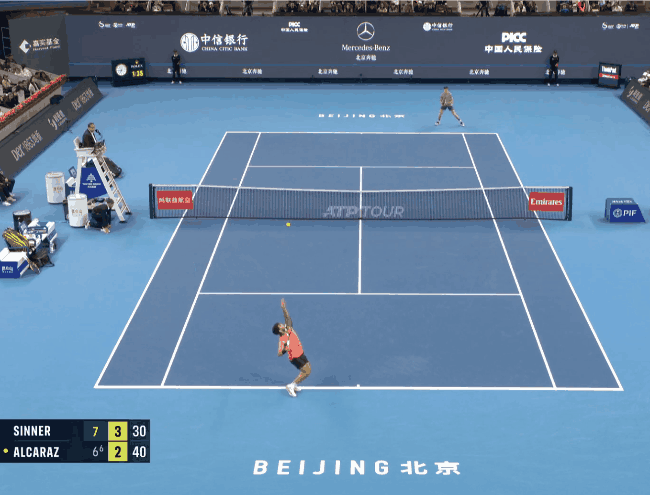
Sinner’s returning was also top-notch. He managed to get consistently deep returns off the Alcaraz serve, not allowing Alcaraz to settle into service points. Even in the example below, Alcaraz gets a 209 km/h first serve into the body of Sinner, jamming him up. But Sinner somehow manages to get out of the way of the ball, delivering an outstanding backhand return while off-balance. From here, Alcaraz is on the back foot, and Sinner dictated the rest of the point.
Mental fortitude – tiebreaks
Sinner and Alcaraz delivered some spectacular tennis in the first and third set tiebreaks. It was largely on the back of their collective mental fortitude – in the first set tiebreak, Sinner had his back against the wall, facing 2 set points at 4-6. In the third set tiebreak, it was Alcaraz’s turn to be under pressure, down 3-0 with the match on the line.
In both instances, staring down the barrel of a tiebreak (or match) defeat – they both managed to find a way to arrest their opponent’s momentum and pull themselves out of trouble.
Firstly, it was Sinner, who staved off two consecutive break points against Alcaraz in the first set tiebreak, largely due to some clutch first serving and quality returning. Facing 2 set points, Sinner reeled off an ace to save the first, and then belted a deep forehand return off an Alcaraz first serve to save the second. Clutch.
Here’s the return at 5-6 in the first tiebreak – Alcaraz has no chance of making a decent play on the ball:
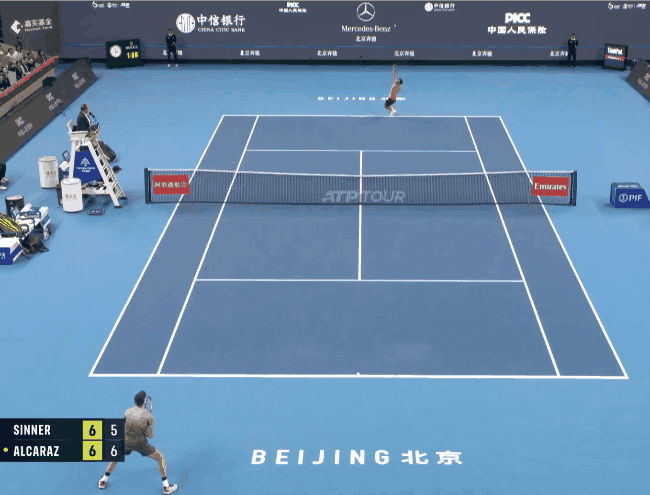
Alcaraz also showed his fearlessness and resilience in the third set tiebreak. He was down 3-0 in the third set tiebreaker against Sinner, who was 18-1 in his last 19 tiebreaks. And then, in true Alcaraz fashion, he reeled off 7 consecutive points. Impressively, 5 of these last 7 points were winners – all against one of the best defenders in the game.
Alcaraz gave some insight into his thought process when he was down 3-0:
"… I didn’t lose hope but I thought, ‘OK, I have to give everything that I have just to try to give me the opportunity to be close’". "I played great points just to make the 3-3 and after that I just think to go for it. If I lose it, at least I went for it.”
The forehand at 4-3 is one of the best illustrations of this ‘go for it’ mentality. Sinner doesn’t do enough with his forehand, directing it central and slightly short. The ball sits up and Alcaraz doesn’t need an invitation – he clubs the forehand for an outright winner. No margin for error on shots like those, but he executes perfectly:
It was a similar result on match point – once again Alcaraz refusing to pull his punches with a massive forehand winner:
Overall thoughts
A gripping, high quality tennis match. Both Sinner and Alcaraz flirted with victory at different stages, and there remains very little to split the two players.
The tactical contrast between the two players was fascinating. Alcaraz was prepared to take on more risk – moving forward often and loading up on that massive FH – while Sinner was prepared to play within himself, backing in his brilliant returning and defensive skills. It did feel as though Sinner was slightly too passive at times, which hurt him.
The winners/unforced error split tells the story well – Alcaraz generated double the winners of Sinner, and largely from that ever-damaging forehand wing:
I made a similar remark after watching the Olympics final between Djokovic and Alcaraz – these two push each other to raise their level; to produce their best tennis. It has all the makings of a long and prosperous rivalry.
Tennis is in good hands.
Time permitting, I’d like to do some analysis for the upcoming Beijing final between Gauff and Muchova. Thanks for reading - AP.




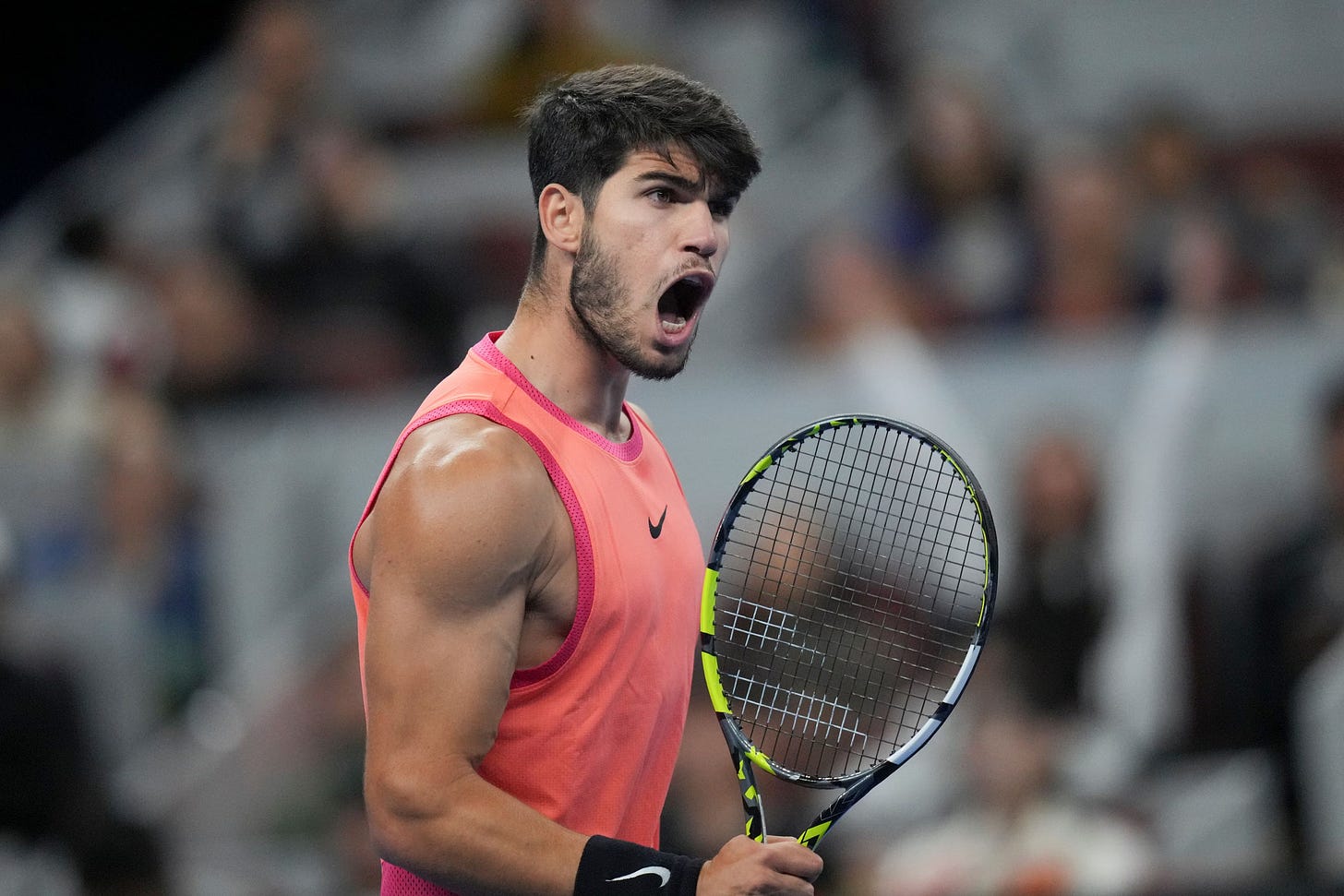

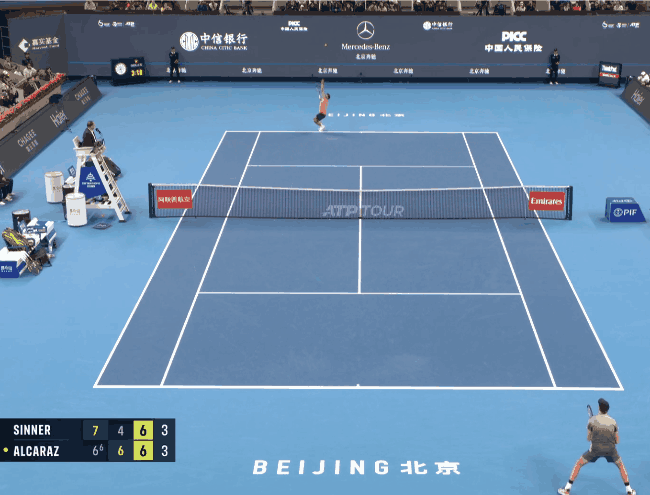
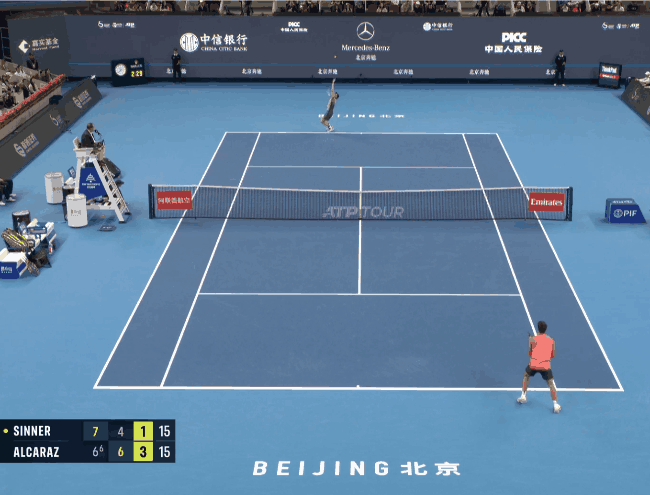
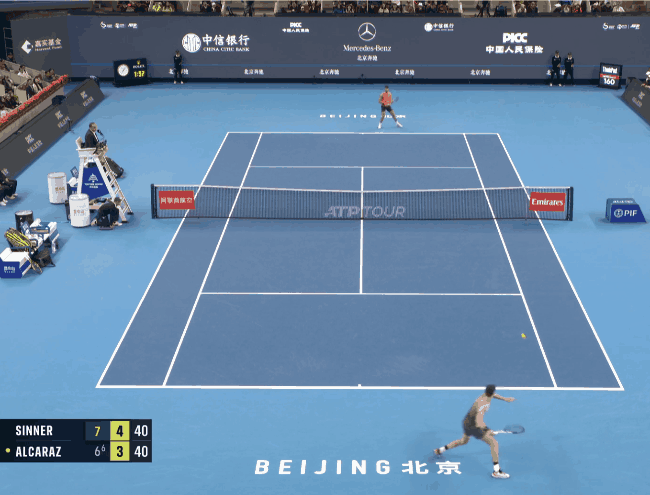

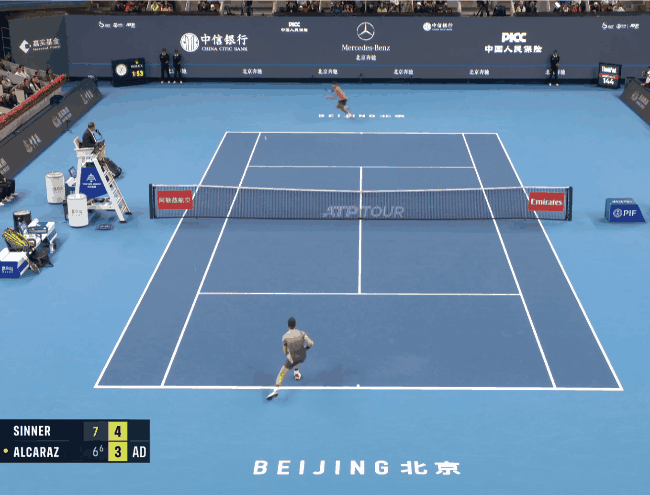
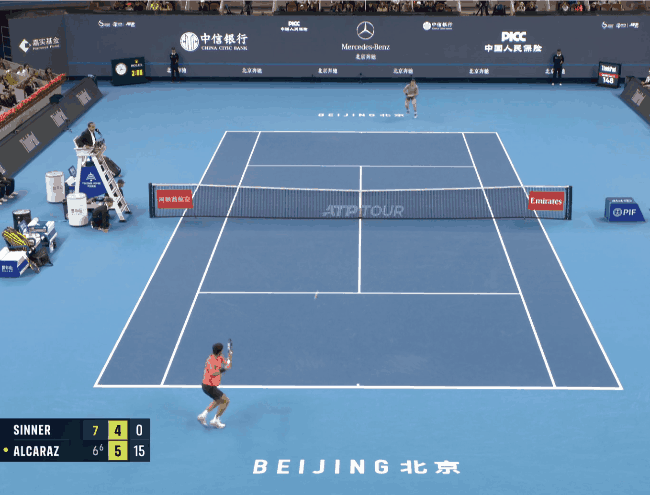
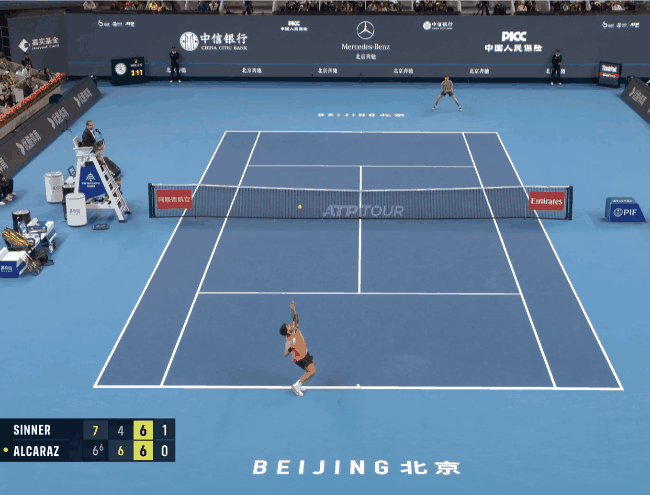


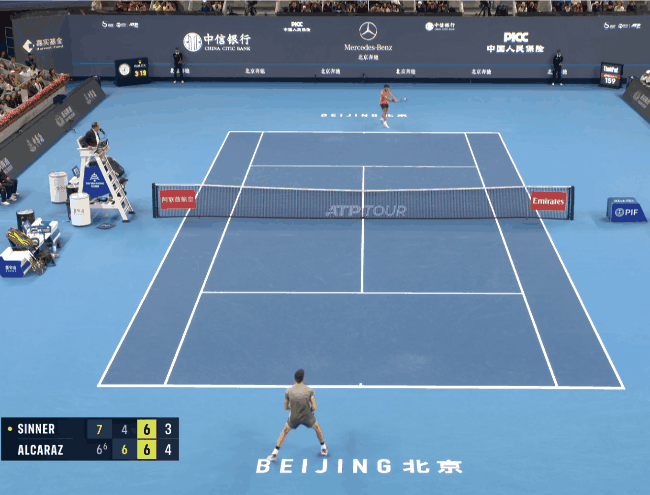
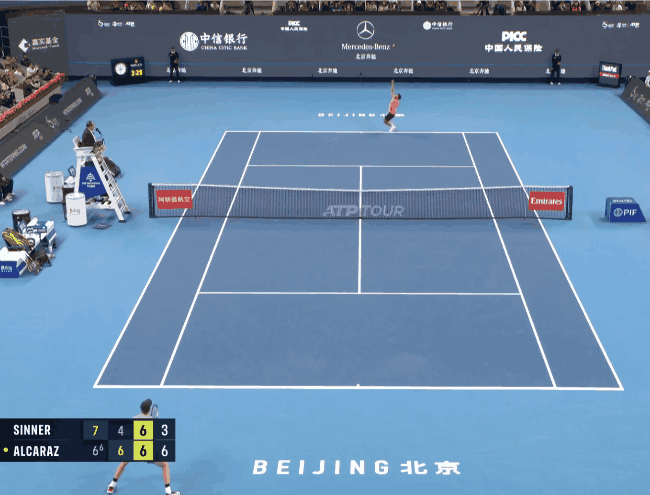

The ATP website has different statistics, Alcatraz has 59 unforced errors, and Sinner has 46. With so many unforced errors in 36 games, the level of the game cannot be considered high-quality and high. Even the Medvedev-Alcaraz match was of better quality.